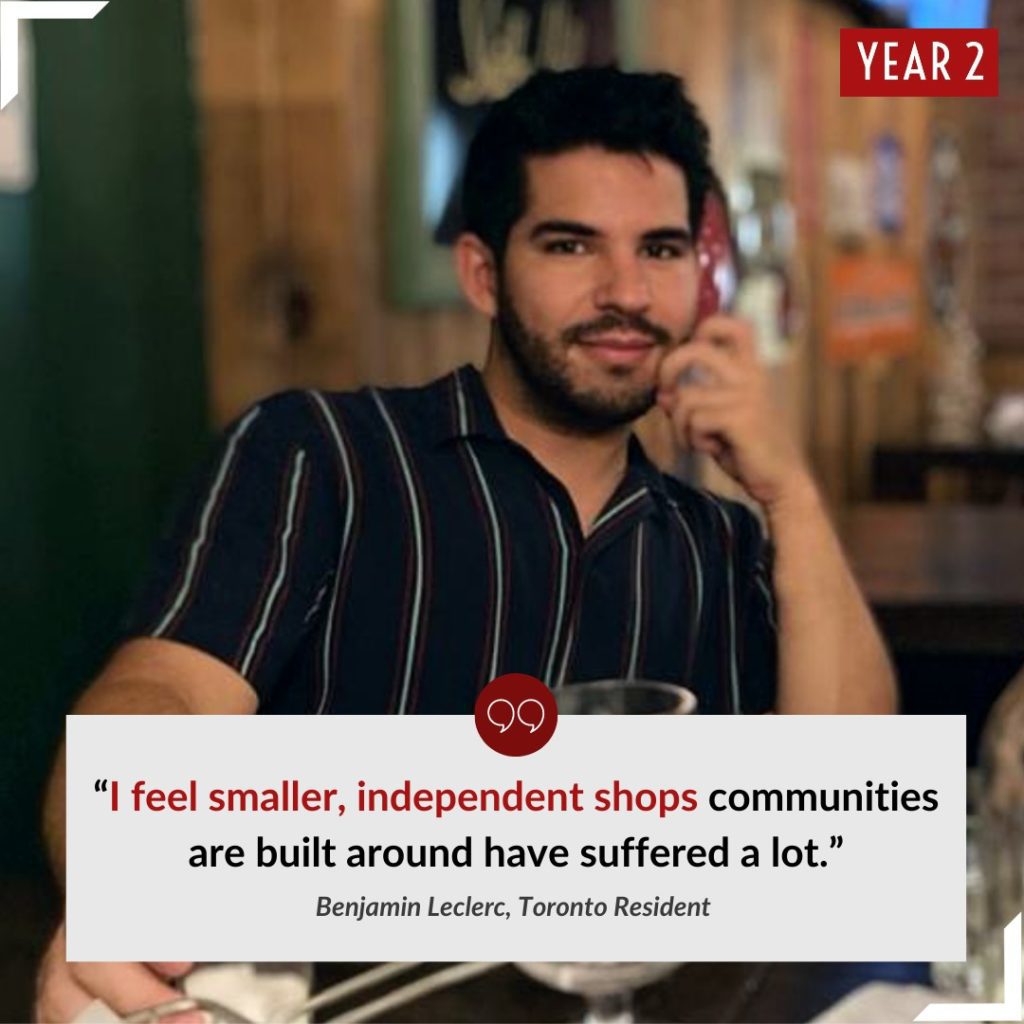How COVID-19 lockdowns are changing our neighborhoods
By Vanessa Nim
According to Restaurants Canada, 40 percent of Canadian Restaurants are unexpected to survive beyond March 2021 — this is on top of the 10 percent that closed permanently within the first six months of the COVID-19 pandemic.
How are restaurant closures changing the face of our favourite neighborhoods? Explore our interactive map to see which restaurants in Toronto’s Entertainment District and across College Street have closed due to COVID-19 lockdowns.
Toronto residents said that lockdowns and resulting closures have taken a toll on community culture.
City local Benjamin Leclerc said that the once vibrant College street in downtown Toronto has taken a downturn this fall.

“Unfortunately, I feel the life on College street has taken a downturn since cases have been rising steadily. [Lockdowns have] definitely impacted the togetherness and participation amongst the communities, especially those that weren’t as tight knit. I feel smaller, independent shops communities are built around have suffered a lot,” Leclerc said.
“COVID has changed the way communities and local culture function in a big way.”
Mycah Panjaitan, Toronto Resident
Mycah Panjaitan, another resident in Toronto, echoed Leclerc’s sentiment.
“COVID has changed the way communities and local culture function in a big way. In my experience, the changes have been most visible in the format of how communities interact,” said Panjaitan. “Now, there is an even heavier reliance on corresponding over the phone or laptop. It has been very restricting as this is all based within the home or and inside space and prohibits people from fully physically accessing public or business spaces.”
Read more: Surviving Lockdowns — How this Ontario Family Restaurant is Faring
How would you feel if your favourite local restaurant was forced to shut down for good? When Stouffville, Ont.’s longest standing restaurant, the Fickle Pickle, nearly shuttered due to lockdowns, residents felt the town was losing a core part of their community.

Leave a Reply